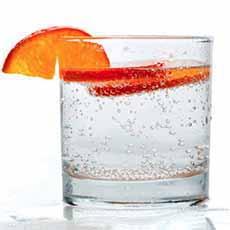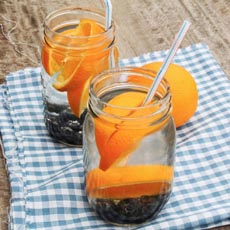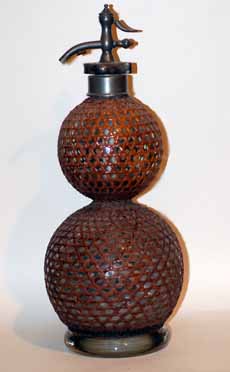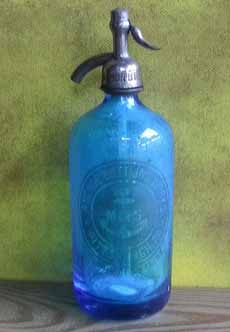FOOD FUN: Soda, Sangria Style & The History Of Club Soda & Soda Pop
|
|
We were inspired by this photo from fine produce purveyor Melissa’s to make “sangria soda.” Instead of being wine-based, toss the fruit (as many varieties as you like) into a soft drink.
We made ours with Diet Sprite and juicy Georgia peaches. Adding fresh fruit works best with ginger ale, lemon-lime and regular or flavored club sodas, which have more delicate flavors than fruit-flavored sodas, cola and root beer. The idea is to let a bit of fruit flavor infuse into the drink, as well as to have some fresh fruit with your pop. Commercial carbonated water dates to the 18th century. It is water into which carbon dioxide gas under pressure has been dissolved. Naturally carbonated water can be created in underground springs, by a natural geologic source of carbon dioxide. This is the source of naturally-carbonated mineral water (although some companies carbonate still mineral waters in the plant). Today, carbonated water has a host of names: bubbly water, club soda, fizzy water, seltzer water, soda water, sparkling mineral water and sparkling water, among others. While naturally carbonated water emerged from some underground springs, it is believed that the first person to aerate water with carbon dioxide was A British physician and scientist, William Brownrigg. He accomplished this in 1740 but never published a paper; so credit went to the first scientist who did so. In 1767, without knowing of Brownrigg’s work, Joseph Priestly independently—and accidentally—invented carbonated water. While studying the nature and properties of gases, he first infused water with carbon dioxide by suspending a bowl of water above a beer vat at a brewery in Leeds, England. He found the resulting bubbly water quite refreshing, and created an apparatus in his lab to carbonate. He served it to his friends, and in 1772 he published a paper, “Impregnating Water with Fixed Air.” Others then developed their own devices to regulate the flow of carbon dioxide into water. But the idea didn’t go commercial until for another decade or so. While Priestley is regarded as “the father of the soft drink” (and many other accomplishments), he did not benefit financially from his invention. In 1783 J. J. Schweppe of Geneva developed a process based on the Priestley’s and founded the Schweppes Company. Carbonated water became available commercially. While Europeans had drunk sparkling mineral water for centuries, it was rarely found in the U.S. until Perrier introduced its sparkling water to the U.S. in the 1970s. Perrier set up a distribution office in New York in 1976, and the drink was an immediate hit. Supported by advertising, it was the first mass-marketed bottled water in the U.S., and was viewed as highly sophisticated. The added bonus: no calories! By 1988, Perrier was selling nearly 300 million bottles in the U.S, representing 80% of all imported mineral water. The first flavored varieties, lemon and lime, were launched in the U.S. before France (source). It was a short step to American manufacturers hopping on the flavoring the carbonated water, with lemon and lime club sodas and seltzers leading the way (the difference between club soda, seltzer and other carbonated drinks). Names for soft drinks in the United States vary regionally. “Soda” and “pop” are the most common terms, although others are used. According to Wikipedia, “coke,” a genericized name for Coca-Cola, is used in the South to refer to soft drinks in general. In New England, it’s “tonic.” The word “soda” derives from the word sodium, a common mineral in natural springs. It has long referred to a household chemical: sodium carbonate, washing soda or soda ash. According to writer Andrew Schloss, “soda” was first used to describe carbonation in 1802. Here are dates that Schloss gives for the debut of the different terms: Different Names For Soda A brief history of the launch of soft drinks: 1798 Soda water Here’s more about which parts of the U.S. use which terms for their soft drinks. |
|







